When it comes to quilting, mixing fabrics is both an exciting adventure and a delicate dance. As professional pajama manufacturers, we’ve spent years mastering the art of blending textiles—not only for garments but also for textiles like quilts that prioritize both comfort and longevity. In fact, many customers ask us, “Can you mix fabrics in a quilt and still get good results?” Absolutely! But you need to do it right.
Combining fabrics means understanding their individual personalities. Some are soft and forgiving, like brushed cotton; others—like linen—can be a bit temperamental. If you throw them all together without a strategy, the result might disappoint you with puckering, shrinking, or frayed seams. But with the right techniques, the results can be stunning.
We’ve tested fabric combinations in-house, from lightweight bamboo to cozy fleece, and we’ve listened closely to our wholesale partners and end users. Their feedback? Mixed-fabric quilts stand out—not just for looks, but also for tactile variety. In fact, a 2021 industry report from Textile World noted that consumer demand for tactile variety in home textiles is on the rise, especially in luxury segments like sleepwear and bedding.
So, ready to quilt like a pro? Let’s dive into why mixing fabrics isn’t just okay—it’s amazing.
Why Would You Mix Fabrics in a Quilt?
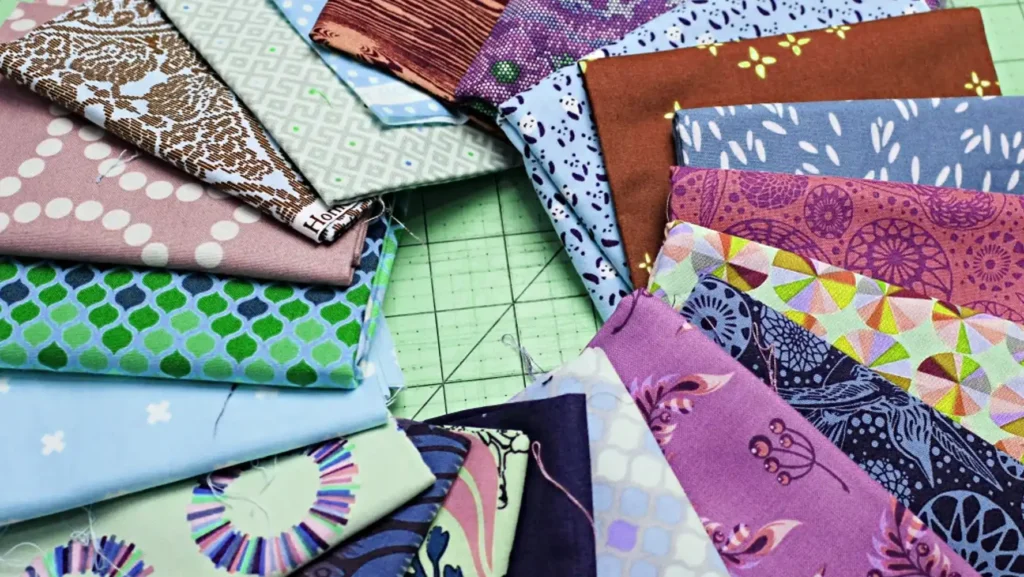
You might wonder—why go through the trouble of mixing fabrics at all? Isn’t sticking with 100% cotton safer? Sure, cotton is reliable, but that mindset limits creativity and innovation. As quilt and pajama makers, we’ve found that mixing fabrics not only brings your design to life, but also enhances functionality. Let’s talk benefits, based on real experience.
First, texture is everything. When you run your hand over a quilt that blends flannel, satin, and cotton, it tells a story—soft, smooth, cozy, crisp. This variation adds emotional and sensory depth. One of our customers even said, “My quilt feels like it hugs me differently in each square.” That’s exactly the feeling we aim for.
Second, resourcefulness. Mixing fabrics lets you use leftovers from other sewing projects, making it budget-friendly and sustainable. In fact, according to the Environmental Protection Agency, textile waste accounts for 11.3 million tons in landfills each year. Reusing your scraps helps reduce that footprint.
Lastly, expression. Quilts are personal. By using various fabrics—say, repurposed pajama flannel from your child’s old set or silky trimmings from a wedding robe—you embed emotion into your work. And trust us, customers feel that authenticity.
Mixing fabrics matters not just for beauty, but for meaning, practicality, and environmental good. That’s why we’re big believers in it.
Quilting With Different Weight Fabrics
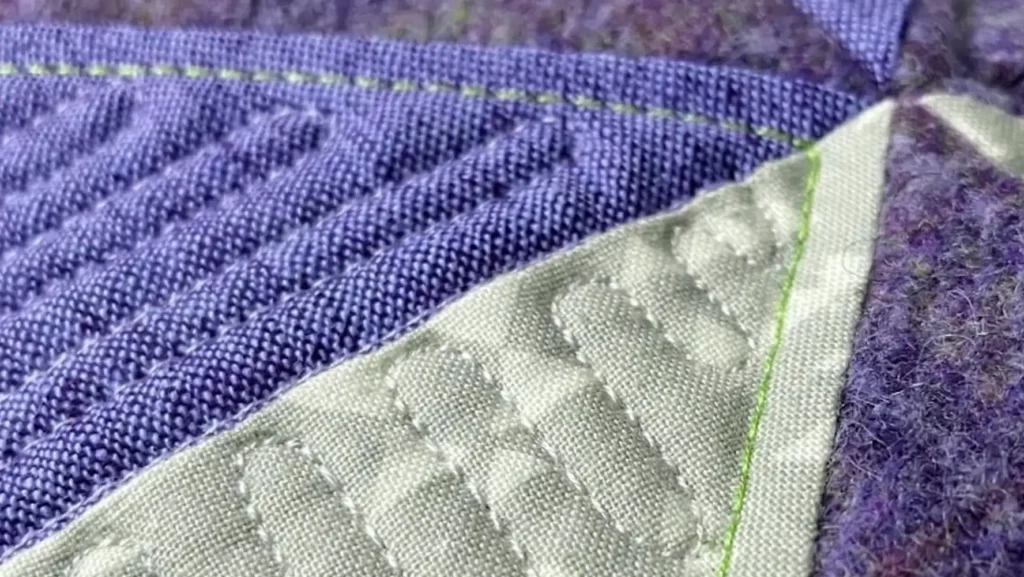
Quilting with fabrics of varying weights presents both challenges and opportunities for quilters. Understanding how to effectively work with different weight fabrics can elevate the quality and durability of your quilt.
1. Enhancing Visual Appeal
Mixing fabrics in a quilt can create stunning visual effects. Different colors, patterns, and textures come together to make a quilt a true work of art. By using a variety of fabrics, you can add depth and dimension to your design.
Pairing a bold print with a solid color can make the pattern stand out. Or combining different textures, like smooth cotton with rough wool, can add tactile interest. When you mix fabrics, the possibilities for creating unique and beautiful designs are endless.
2. Personalizing the Quilt
Mixing fabrics allows you to personalize your quilt and make it truly one-of-a-kind. You can choose fabrics that hold special meaning to you, such as fabrics from a favorite shirt, a piece of clothing from a loved one, or fabrics that remind you of a particular place or time. This adds a sentimental value to the quilt and makes it a cherished heirloom.
Additionally, by mixing fabrics, you can tailor the quilt to your own personal style and taste. Whether you prefer a modern, minimalist look or a more traditional, country style, you can create a quilt that reflects your individuality.
3. Adding Durability
Using a mix of fabrics in your quilt can also increase its durability. Different fabrics have different strengths and weaknesses, and by combining them, you can create a quilt that is more resistant to wear and tear.
Using sturdy denim and soft cotton can increase the durability of areas on the quilt that are more likely to experience stress. Additionally, mixing fabrics can help distribute the weight and pressure of the quilt more evenly, making it less likely to damage over time.
4. Experimenting and Having Fun
Mixing fabrics in your patchwork is a great way to experiment and have fun. It allows you to be creative and try new combinations and techniques. You can try different color palettes, patterns, and textures to see what works best.
It’s also a great opportunity to learn new skills and techniques, such as patchwork, applique, or quilting. Whether you’re a beginner or an experienced quilter, mixing fabrics can add new excitement and fun to your patchwork projects.
Popular Fabric Combinations to Try
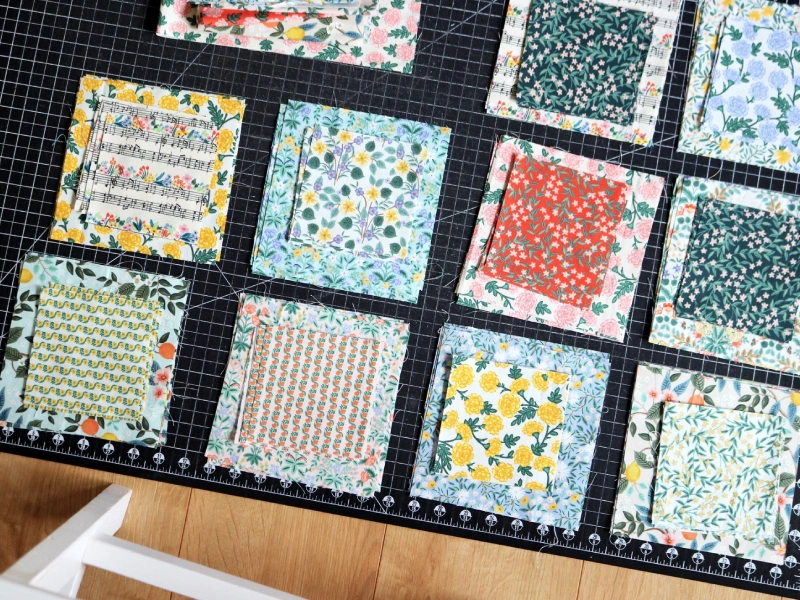
Over the years, we’ve experimented with countless fabric combinations in both pajamas and quilting. Some blends work like magic—others, not so much. The good news? You don’t need to reinvent the wheel. Start with pairings that we and our customers love and trust.
One of the most reliable combinations is cotton and linen. Both are breathable, natural fabrics, but linen adds that textured, slightly rustic charm. Our customers often describe this pairing as “cozy yet elevated.” Just remember, linen tends to wrinkle and fray more than cotton, so prewashing and stabilizing are essential.
Then there’s the ever-popular cotton with flannel. As pajama experts, we know flannel inside and out. It’s warm, comforting, and perfect for cooler climates. Quilts made with this duo are favorites among families—especially when used for kids’ bedding. We’ve had wholesalers tell us their flannel-trimmed cotton quilts fly off the shelves in winter.
For a more adventurous texture contrast, try cotton with denim. It’s bold and durable. Denim squares make beautiful borders or accents in quilts meant for daily use. Just be mindful of weight differences—this combo works best with strong backing and heavy-duty needles.
As noted by Wikipedia’s article on quilting, mixing materials is a historical tradition, often born from necessity and evolving into an art. We’ve taken that idea into the modern age, giving it a professional polish through years of garment construction.
Your quilts can be functional, fashionable, and full of personality—all by starting with the right fabric pairings.
Mistakes to Avoid When Mixing Fabrics in a Quilt
Mixing fabrics can make your quilt pop, but it can also cause frustration if you’re not careful. Trust us—we’ve seen what happens when beautiful fabric choices are ruined by small but crucial oversights. Whether you’re a beginner or a seasoned quilter, avoiding these mistakes will save you time, fabric, and stress.
Ignoring fabric grain is one of the most common missteps. Every fabric has a grain—essentially the direction in which it naturally stretches or stays firm. Quilting with fabric cut against the grain can lead to distortion, uneven seams, or worse, saggy corners. In our sleepwear factory, we strictly follow grain direction for both aesthetics and durability. The same principle applies to quilts.
Another big one? Using the wrong needle and thread. Lightweight fabrics like silk or rayon need finer needles and delicate thread, while sturdier ones like denim or canvas demand heavier-duty tools. We’ve helped customers troubleshoot puckering and skipped stitches simply by swapping their needle type. Always match your tools to the fabric. If you’re unsure, follow needle sizing standards like those provided by Schmetz Needles, a trusted industry source.
Lastly, don’t underestimate the importance of consistent prewashing. Mixing washed and unwashed fabrics can cause shrinkage wars—literally. One of our wholesale clients once returned a batch of pajama sets because different fabric types had shrunk unevenly. Lesson learned: always prewash everything before sewing, especially in quilts where alignment is critical.
The best part? When you avoid these pitfalls, your quilt not only looks polished but also holds up beautifully in daily use. Our end users consistently rave about how “professional and snug” their quilts feel—and much of that comes down to avoiding these small but mighty mistakes.
Tools and Supplies for Multi-Fabric Quilting
If you’re diving into a quilt with mixed fabrics, you need the right tools—no cutting corners here. In our pajama manufacturing workshops, we’ve tested hundreds of fabric blends, and one thing is certain: quality tools make all the difference. A well-equipped quilter handles variety with ease, while the wrong needle or thread can turn your project into a headache.
First, a versatile sewing machine is a must. Look for one that allows easy tension adjustments and stitch type changes. When you’re working with flannel, satin, cotton, and denim all in one quilt, you’ll need different settings for each. Some of our favorite machines include models from Janome and Brother—known for reliability and ease of use. Adjust the presser foot pressure if your fabric is bulky or slippery. And if you’re stitching stretchy fabrics, switch to a walking foot to prevent bunching.
Next, let’s talk needles and thread. You wouldn’t sew silk with a denim needle, right? Invest in a range of needle sizes, from 70/10 for light fabrics to 90/14 for heavier ones. And always use polyester thread for mixed-fabric quilts—it’s strong, flexible, and holds up well during washing, which is exactly what our pajama fabrics endure daily.
Don’t skip interfacing or stabilizers. These hidden heroes give structure to lightweight or slippery fabrics like rayon or satin. Especially when quilting with performance blends or upcycled pajama fabric scraps, interfacing keeps everything in shape. We often use fusible woven interfacing in our own product sampling room for consistency.
Another tip? Rotary cutters and rulers help you stay accurate across fabric types, which stretch or fray differently. One of our wholesale buyers told us that after switching to ergonomic rotary blades, her quilting time dropped by 30%, with cleaner, straighter seams.
These tools don’t just make life easier—they protect your investment. And when customers email us saying their quilts “feel professionally finished,” we know it’s thanks to the right preparation behind the scenes.
Expert Tips from Quilting Pros
Over the years, we’ve had the pleasure of collaborating with quilting enthusiasts, sewing instructors, and even textile engineers—not just as pajama manufacturers, but as part of a larger fabric-loving community. What they’ve taught us is simple yet powerful: great quilts come from thoughtful choices, not just pretty patterns.
One of the most consistent pieces of advice we hear from seasoned quilters is: “Respect your fabric’s personality.” Each textile behaves a certain way. Cotton is the easy-going friend. Linen needs gentle handling. Flannel hugs every seam. As one quilter told us during a workshop we hosted last fall, “If you listen to your fabric, it’ll tell you what it needs.” That really stuck with us.
Another pro tip? Press, don’t iron. When combining fabrics, especially ones like flannel or rayon, pressing your seams with an up-and-down motion (rather than sliding) keeps the fibers intact and prevents distortion. This is something we also do in-house during the production of our high-end pajama sets to maintain the fabric’s integrity.
Also, don’t underestimate the power of labeling your fabric pieces before assembling. Some of our clients who make customized quilts using pajama fabric offcuts swear by this. It helps keep track of stretch direction, grain, and texture.
And here’s a favorite from one of our most trusted wholesale partners: “Quilting is memory-making. So treat each square with care.” Whether it’s recycled silk from a wedding robe or soft fleece from your child’s baby pajamas, blending these fabrics into one quilt is about storytelling. We’ve had clients send us photos of their quilts made from our retired pajama fabrics—and they call them “legacy pieces.”
Finally, lean into community wisdom. From Reddit forums to professional guilds, quilters are some of the most generous people online. And don’t forget to check out guidelines from institutions like the National Quilters Circle or even general textile care standards on Wikipedia, which can help you understand fabric behavior deeply.
The real secret? Be patient, be proud, and trust your instincts. Quilting is both a craft and a heart-led journey.
Mixing Fabrics Preparatory Work
Here’s what you need to know:
Understanding Fabric Weight
Fabric weight refers to the thickness and density of the fabric. Lighter weight fabrics, such as cotton voile or lawn, are airy and delicate, while heavier fabrics, like denim or upholstery fabrics, are more substantial and durable.
Choosing Compatible Fabrics
When quilting with different weight fabrics, it’s essential to select fabrics that are compatible in terms of weight and drape. Pairing lightweight fabrics with heavier ones can create imbalance and distortion in the finished quilt. Instead, opt for fabrics with similar weights to ensure a cohesive and stable quilt.
Adjusting Seam Allowances
To accommodate the differences in fabric weight, consider adjusting your seam allowances accordingly. Thicker fabrics may require wider seam allowances to prevent puckering and distortion, while lighter weight fabrics may benefit from narrower seam allowances to reduce bulk.
Layering Techniques
Layering techniques play a crucial role in quilting with different weight fabrics. When layering fabrics for quilting, ensure that lighter weight fabrics are positioned on top of heavier ones to prevent distortion and ensure smooth stitching.
Quilting Patterns and Techniques
Certain quilting patterns and techniques are better suited for quilting with different weight fabrics. Opt for simpler quilting designs, such as straight-line quilting or minimalistic motifs, when working with heavier fabrics to prevent puckering and distortion. For lighter weight fabrics, explore delicate quilting designs that complement the fabric’s drape and texture.
Fabric Preparation
Proper fabric preparation is essential when quilting with different weight fabrics. Prewash fabrics to remove any sizing or chemicals and to pre-shrink fabrics that may have varying shrinkage rates. This helps prevent distortion and ensures uniformity in the finished quilt.
Interfacing and Stabilizers
Using interfacing or stabilizers can help reinforce lighter weight fabrics and provide additional support during the quilting process. Choose interfacing or stabilizers that are compatible with your fabric weights and follow manufacturer instructions for application.
Testing and Experimentation
Before committing to a quilt project, it’s always a good idea to conduct fabric compatibility tests and experiment with different weight fabrics and techniques on a smaller scale. This allows you to identify any potential issues and refine your approach before tackling larger projects.
Quilting with different weight of fabrics requires careful consideration and experimentation. By choosing compatible fabrics, adjusting seam allowances, exploring layering techniques, and utilizing appropriate quilting patterns and techniques, you can create beautiful and durable quilts that showcase the unique qualities of each fabric. So embrace the challenge, experiment with confidence, and enjoy the journey of quilting with different weight fabrics!
Can You Mix Fabrics in a Quilt?
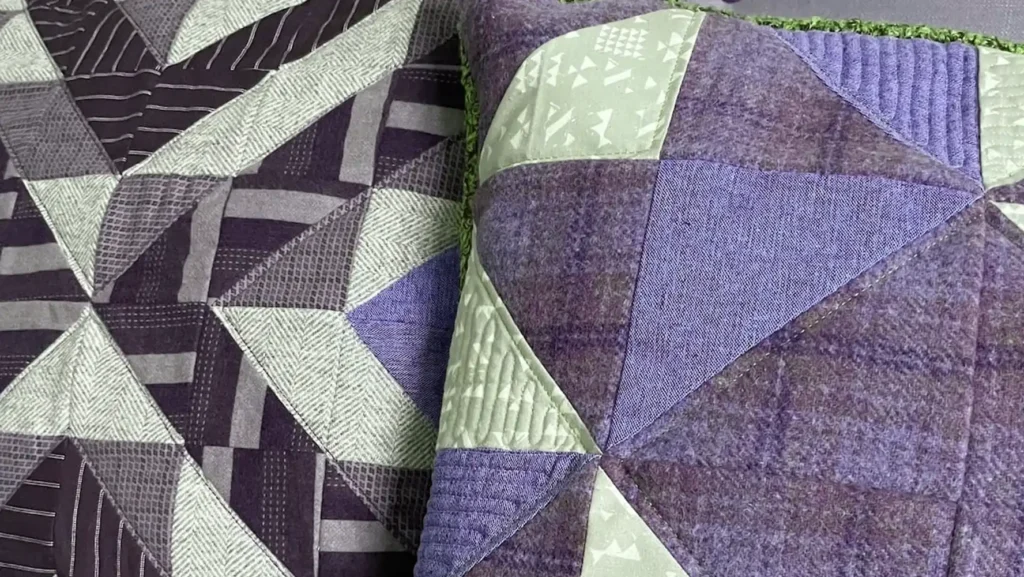
Quilting is an art form that allows for endless creativity and expression. One question that often arises among quilters is, “Can You Mix Fabrics in a Quilt?” The answer is a resounding yes! Mixing fabrics in a quilt can open up a world of design possibilities, but it’s important to be aware of certain considerations to ensure a successful and visually appealing result.
Here are key considerations when blending fabrics in your quilt:
1. Texture and Weight
Balancing the texture and weight of fabrics is crucial for a harmonious quilt. Combining lightweight fabrics with heavier ones can add depth and dimension to your quilt, while incorporating a variety of textures creates visual interest.
2. Color Harmony
Achieving color harmony is essential for a visually appealing quilt. Select fabrics with colors that complement each other, whether through contrasting hues for bold statements or analogous colors for subtle transitions. Experiment with color placement to create captivating effects.
3. Print Scale
Consider the scale of prints when mixing fabrics. Pairing large-scale prints with smaller ones or solids can create balance and prevent overwhelming the quilt with too much visual information. Mixing prints of varying scales adds complexity and depth to your design.
4. Fabric Care
Take into account the care instructions of the fabrics you’re mixing. Fabrics with different care requirements, such as washing temperatures or drying methods, may shrink or distort at different rates, affecting the overall appearance of the quilt. Prewashing fabrics can help mitigate these issues.
5. Quilt Functionality
Consider the intended use of the quilt when selecting fabrics. Quilts meant for decorative purposes may prioritize aesthetics over durability, allowing for more delicate fabric combinations. Conversely, quilts intended for everyday use or heirloom quality should feature durable fabrics that withstand regular wear and washing.
6. Personal Style and Theme
Infuse your personal style and thematic preferences into your fabric choices. Whether you prefer modern minimalism, vintage charm, or eclectic bohemian flair, selecting fabrics that resonate with your aesthetic vision ensures a quilt that reflects your unique personality.
7. Experimentation
Don’t be afraid to experiment with unconventional fabric combinations. Mixing unexpected textures, colors, and prints can lead to surprising and delightful results, pushing the boundaries of traditional quilting and fostering creativity.
8. Cohesiveness
Strive for cohesiveness in your fabric selection to create a unified design. While diversity adds interest, maintaining a sense of unity through color schemes, themes, or repeating motifs ties the quilt together visually and conceptually.
Tips for Successful Fabric Mixing
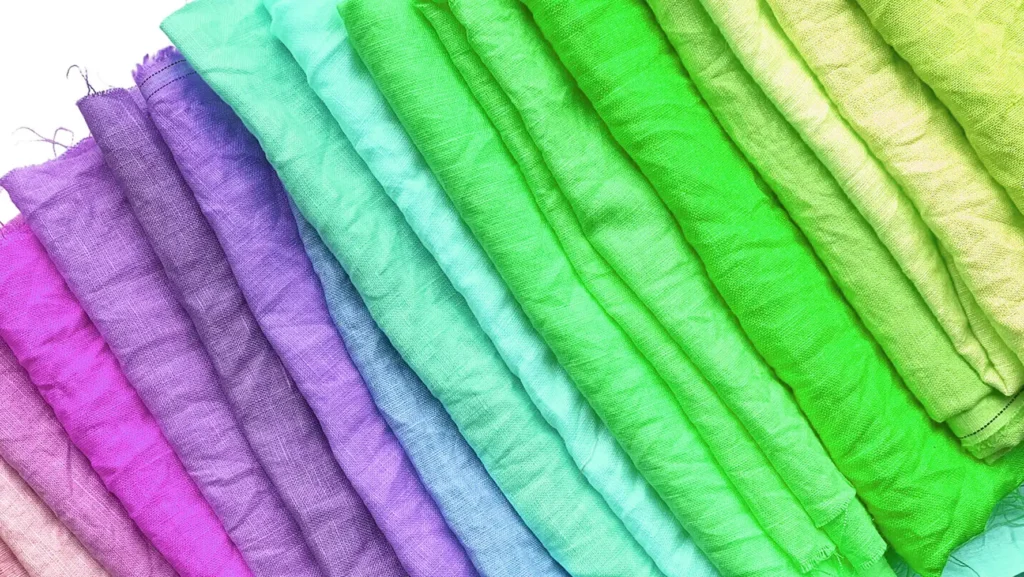
Mixing fabrics in quilting offers a wonderful opportunity to enhance the charm of your creations. Firstly, it’s advisable to start small, such as with pillows or table runners, enabling you to try out various combinations.
Testing compatibility by laying out swatches helps avoid clashes. Embracing contrast in textures, weights, and colors, along with considering scale and creating balance, are key. Coordinating colors and mixing patterns while limiting the palette also contribute to a pleasing design.
Most importantly, trust your instincts and enjoy the process. Quilting is a creative pursuit where there are no strict regulations. Let your imagination soar as you experiment and have fun mixing fabrics, ultimately resulting in one-of-a-kind and beautiful quilts that showcase your unique style and creativity.
FAQs About Mixing Fabrics in Quilts
Can I mix different types of fabrics, like cotton and silk, in a quilt?
Absolutely! Mixing different fabric types adds variety and richness to your quilt. Just ensure they are compatible in terms of weight and care instructions
Should I prewash fabrics before mixing them in a quilt?
Prewashing fabrics is recommended to prevent uneven shrinkage or color bleeding, especially when combining fabrics with different care requirements.
How can I ensure durability when mixing fabrics?
To enhance durability, consider reinforcing seams and using appropriate interfacing or stabilizers for delicate fabrics.
Are there any fabric combinations to avoid in quilting?
Avoid pairing fabrics with vastly different care instructions, as this may lead to uneven wear or damage over time.
Can I mix vintage and modern fabrics in a quilt?
Absolutely! Mixing vintage and modern fabrics adds character and a unique aesthetic to your quilt. Just ensure they are clean and in good condition.
Is it necessary to use a specific thread type when quilting with mixed fabrics?
Using a high-quality thread suitable for both the fabric types and the quilt’s intended use ensures optimal results and longevity.
Conclusion
Ready to dive into your next quilting project?
Explore the endless possibilities of mixing fabrics in your quilts and unleash your creativity! Whether you’re a seasoned quilter or just starting out, experimenting with fabric combinations can elevate your creations to new heights.
Gather your favorite fabrics, try out different textures and colors, and let your imagination run wild. Start stitching and discover the joy of crafting unique, personalized quilts that reflect your style and passion. Happy quilting!
